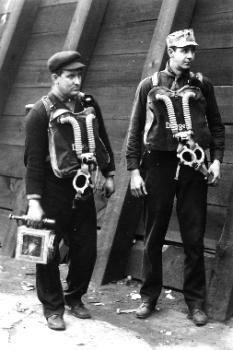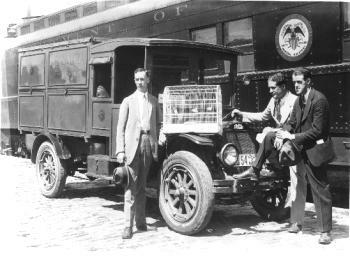A canary bird used at Hollinger Mine, Timmons, Ontario, Canada after a mine fire in 1928. Courtesy MSHA.
Mine Rescue men returning from the scene of an explosion with canary in "resuscitation" cage. Date and location unknown, courtesy MSHA.
Quick fact: According to tests conducted by the Bureau of Mines, canaries were preferred over mice to alert coal miners to the presence of carbon monoxide underground, because canaries more visibly demonstrated signs of distress in the presence of small quantities of the noxious gas.
For instance, when consumed by the effects of carbon monoxide, a canary would sway noticeably on his perch before falling, a much better indicator of danger than the limited struggle and squatting, extended posture a mouse might assume.



A canary in large cage used to transport birds in rescue vehicles (1915), courtesy MSHA.

























